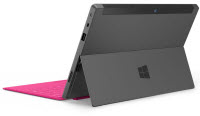OEMs feel the 'challenges' of high Windows 8 pricing


Hardware equipment (OEMs) and design manufacturers (ODMs) are cautious in the run up to the launch of Windows 8, with price being the major concern, claims Sterne Agee analyst Vijay Rakesh in a research note.
The problems, according to Rakesh, are many-fold. First and foremost are OEM and ODM concerns that Windows 8 will push up pricing.
"We believe OEMs-ODMs are becoming more cautious on Windows 8 ahead of launch," writes Rakesh, "with focus on potentially high platform pricing with Windows 8; consumer training and support required with a totally new Windows 8 interface and features versus Windows 7, all driving a more conservative PC outlook".
It seems that some of Microsoft's hardware partners are also concerned that if Microsoft low balls the pricing of its Windows RT-powered Surface tablets, this will have a negative knock-on effect on sales.
"Also the new $199 Surface tablet retail price might be a 'too competitive' price point for the Windows 8 and Windows RT Ecosystem, given a higher bill of materials compared to that price tag," claims Rakesh.
Another problem is content, and the realization that availability of content for tablet users to consume is more important than price.
"While there are expectations around Windows 8 and Windows RT tablets, there is also a realization that what makes iPad tablets sell is content, not tablet pricing".
In other words, there's a worry that while Microsoft has been focusing on Windows 8 and the hardware, it has neglected the content ecosystem.
Hardware ODM Compal is also worried that Ultrabook sales will fall short of Intel's expectation. It expects the thin-and-light devices to account for between 5 and 10 percent of notebook sales during the fourth quarter of 2012, rising to around 20 percent in 2013. This figure falls dramatically short of the 40 percent that Intel has previously touted.
Image source: Microsoft.